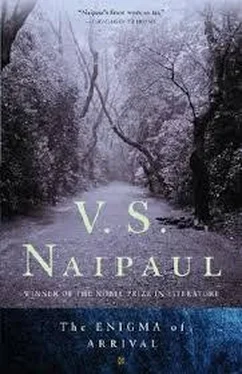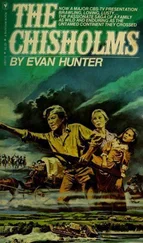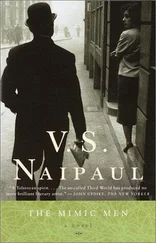V. Naipaul - The Enigma of Arrival
Здесь есть возможность читать онлайн «V. Naipaul - The Enigma of Arrival» весь текст электронной книги совершенно бесплатно (целиком полную версию без сокращений). В некоторых случаях можно слушать аудио, скачать через торрент в формате fb2 и присутствует краткое содержание. Год выпуска: 2012, Издательство: Picador, Жанр: Современная проза, на английском языке. Описание произведения, (предисловие) а так же отзывы посетителей доступны на портале библиотеки ЛибКат.
- Название:The Enigma of Arrival
- Автор:
- Издательство:Picador
- Жанр:
- Год:2012
- ISBN:нет данных
- Рейтинг книги:3 / 5. Голосов: 1
-
Избранное:Добавить в избранное
- Отзывы:
-
Ваша оценка:
- 60
- 1
- 2
- 3
- 4
- 5
The Enigma of Arrival: краткое содержание, описание и аннотация
Предлагаем к чтению аннотацию, описание, краткое содержание или предисловие (зависит от того, что написал сам автор книги «The Enigma of Arrival»). Если вы не нашли необходимую информацию о книге — напишите в комментариях, мы постараемся отыскать её.
The Enigma of Arrival — читать онлайн бесплатно полную книгу (весь текст) целиком
Ниже представлен текст книги, разбитый по страницам. Система сохранения места последней прочитанной страницы, позволяет с удобством читать онлайн бесплатно книгу «The Enigma of Arrival», без необходимости каждый раз заново искать на чём Вы остановились. Поставьте закладку, и сможете в любой момент перейти на страницу, на которой закончили чтение.
Интервал:
Закладка:
So for a week or more I balanced between the two things — anxiety, the idea of flux — when I heard, from beyond the churchyard, the sound of a bulldozer or something like it. The noise traveled through the ground, in vibrations; it was not a noise that a window could shut out.
The cow sheds and dairy buildings beyond the churchyard were being pulled down — structures of clay tiles and red brick that had been so much part of the view as I came down the hill at the end of my walk, so natural and right, that I had not paid them too much attention. Now, with the sheds gone, the ground looked naked and ordinary; and the water meadows at the back were exposed, and the trees on the riverbank. The clay tiles from the roofs were stacked up; the roof timbers were stacked up (and how new they looked, though the buildings had seemed to me so old). And then very quickly the open view was blocked out again, with a wide prefabricated shed with slatted timber walls, and with the printed name of the shed makers on a board or metal plate just below the apex of the roof. (A shed like this, but without the slatted walls, had been put up, one or two owners or managers before, at the edge of the old farmyard over the hill, and not far from Jack’s cottage, to store hay, to replace the cottage-shaped hayrick covered with black plastic sheeting on the droveway — that hayrick now moldering away, the black plastic itself weathered, without its luster and tension, no longer crackling when it flapped, its texture now rather like the skin of very old people, like a faded rose petal.)
Change! New ideas, new efficiency. Before, on the roadside, at the entrance to the dairy yard, there had been a wooden platform where the milk churns were placed — set at that height to be easily picked up by the milk van or truck. There were to be no churns now. There were to be refrigerated tanks, and milk was to be collected by tanker.
Next to the metal-walled barn at the top of the hill, another prefabricated cow shed was set up; and next to that, a modern milking building. This milking building or milking “parlor” (quaint word) was a mechanical-looking affair. Its concrete floor, set in a sloping field, looked like a concrete platform. It had pipes and meters and gauges; and the men who worked the parlor, who corralled the dung-stained cattle into the pens or channels, had something of the grimness of industrial workers.
They drove up to the milking parlor in brightly colored cars (the colors noticeable up there, against the soft colors of the downs, green and brown and chalk and in the winter the blurred darkness of stripped trees). These cars, when parked, helped to make the milking parlor and the barn and the new prefabricated shed look like a little factory at the top of the hill.
The parlor hissed mechanically, electrically. But the new prefabricated shed gave off a smell of dung. Some of the earth excavated for the foundations of the parlor had been dumped between the parlor and the paved lane; in this area, waste ground, grass grew thick and green, with a scattering of weeds and stray wheat.
The brightly colored cars, the hum and hiss of the milking machine (the cows, even with their dung, reduced to machine-managed objects), the tense young men, conscious of their style, their jeans and shirts, their mustaches and cars — they were all aspects of the new, exaggerated thing that had come upon us.
Twice a day the milk tanker went grinding up the hill, up the resurfaced lane, to empty the refrigerated milk tanks of the new milking parlor. With the farm tractors and the motorcars of the new workers, my walk in the lane beside the windbreak was at times like a walk on a public road; I had to watch for traffic.
On the public road, the thatched cottage with the pink walls and the straw pheasant on the ridge of the roof lost a little more of its first character. So pretty, so like a postcard, when I had first seen it, so like something one had always known, with its rose hedge and its small, polished windows. The dairyman would have loved it too, I am certain; but, like me at the beginning, he would have seen its beauty as a natural attribute of the country setting; and he had lived in the house as he might have lived in a house in the town from which he had come, without any feeling that anything was owed to the house in which he and his family lived; having all his life considered houses, even those in which he lived, as belonging to other people. Basins and pots and pans and bits of paper and tins and empty boxes had been left out in the garden; and some of those things had stayed there even after the dairyman and his family had gone.
Now part of the hedge and the wire fence were taken down, so that the car of the new couple could be parked off the public road. The car was important to the new people, more important than the house. They were young people, without children; and they handled the house in a new way. It was a place of shelter, no more: temporary shelter for a temporary job. The wife sunbathed in the front garden whenever she could; and perhaps this was why the front door was often open. That open front door was very unsettling.
The house as a place of shelter, not as a place to which you could transfer (or risk transferring) emotion or hopes — this attitude of the new couple to the thatched house seemed to match the more general new attitude to the land. The land, for the new workers, was merely a thing to be worked. And with their machines they worked it as though they intended to turn all the irregularities of nature into straight lines or graded curves.
One day I saw a heavy, wide roller being pulled by a tractor through a field of young grass, already fairly tall though, and succulent-looking. The roller appeared to be breaking the stalks of the grass and creating, as if spectrally, the effect of a striped, two-toned lawn. What was the point of that? The young man I asked seemed bemused. Perhaps he hadn’t understood what I had said. He mumbled something which I couldn’t understand — all his style breaking down at this moment of speech (and making me think back to the strangled speech, like gruff throat noises, of Jack’s father-in-law: “Dogs? Dogs. Worry pheasants”). Even when what the young man said was made clear to me, it didn’t make sense. The stalks were being crushed, he said, to encourage stronger growth.
Another man said, on another day, that the point of the roller was to press down the “Wiltshire flints” into the ground, so that when the time came the grass could be cut without damage to the cutting machine. “One Wiltshire flint,” he said — and the flints of Wiltshire and of the downs of my daily walk were given an importance and malignity I had never attached to them—“could do thousands of pounds’ worth of damage to one of these machines.”
One new machine in particular I noticed. It made great rolls out of hay, great Swiss rolls of hay, as it were. These rolls, too big to be lifted or unrolled by a man, were manhandled by another impressive machine, a machine with iron grapples like giant scorpion’s tails. A store of these rolls — in two layers, like a store of hay against some epic winter — was established far from the old farm buildings, in an unfenced, flint-rubbled valley off the droveway, just below the hill with the larks and the barrows, and from the top of which you had a sudden, near view of Stonehenge.
So there were three stores of hay at different places: the Swiss rolls here, the golden rectangular-sided bales in the new hay shed at the edge of the old farmyard, and the bales, also rectangular-sided, in the rotting hayrick halfway down the straight stretch of the droveway. What was the point of the Swiss rolls? Was there an advantage over the traditional bales? I never knew until years later, when this section of my life was closed. The bales, tightly banded by the baling machines, had to be broken into by hand and then spread out for cattle. The big rolls had simply to be unrolled; a machine did the job in minutes.
Читать дальшеИнтервал:
Закладка:
Похожие книги на «The Enigma of Arrival»
Представляем Вашему вниманию похожие книги на «The Enigma of Arrival» списком для выбора. Мы отобрали схожую по названию и смыслу литературу в надежде предоставить читателям больше вариантов отыскать новые, интересные, ещё непрочитанные произведения.
Обсуждение, отзывы о книге «The Enigma of Arrival» и просто собственные мнения читателей. Оставьте ваши комментарии, напишите, что Вы думаете о произведении, его смысле или главных героях. Укажите что конкретно понравилось, а что нет, и почему Вы так считаете.












